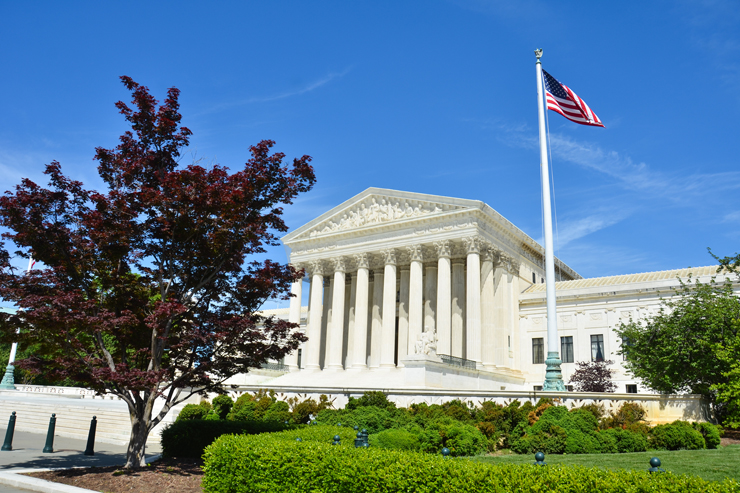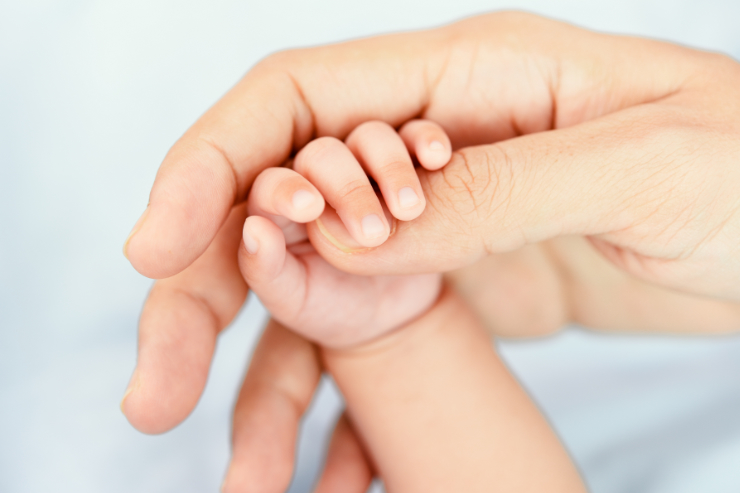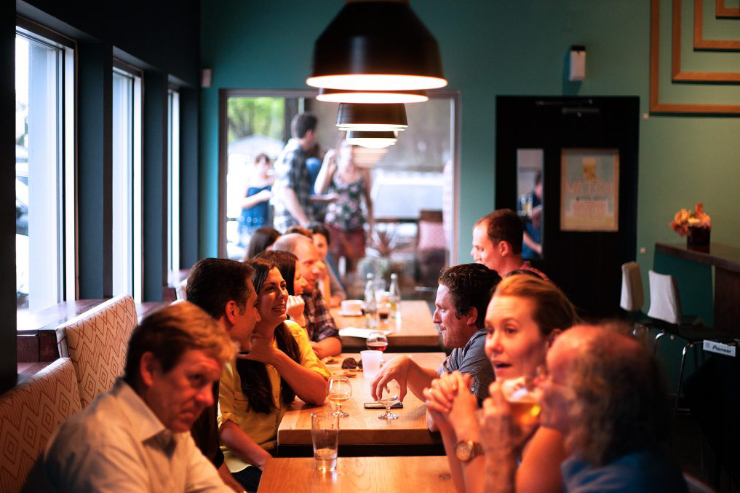
United States Supreme Court
In most political and cultural circles, for decades, there has been much talk, passionate action and legal success in the fight against unjust discrimination. Persons are created equal in dignity and most people naturally rebel when someone suffers prejudice or injustice on the basis of race, ethnicity, sex, age, religion, handicap or other reasons.
But one area that generally gets a pass from the typical opprobrium that attends brazen discrimination is the practice of abortion. Discrimination in favor of abortion is somehow ignored and permitted by so many who in no other circumstances would tolerate it. Among some social circles such discrimination is sometimes almost treated as genteel.
Many know that Planned Parenthood was founded by Margaret Sanger with explicitly eugenic intentions. In a 1932 speech about compulsory sterilization, Sanger spoke about ensuring that “morons, mental defectives, epileptics… illiterates, paupers, unemployables, criminals, prostitutes, dope-fiends” are sterilized so that they don’t have children. In her autobiography she proudly recounted her speech to a Ku Klux Klan meeting in 1926 and in a 1939 letter, she wrote, “We don’t want the word to get out that we want to exterminate the Negro population.” Jesus once said, “A rotten tree produces bad fruit” (Mt 7:17), and we shouldn’t be surprised to discover discrimination in the fruits of a tree that began with such blatant eugenics.
The practice of abortion is clearly racist. In the United States, for example, according to the Centers for Disease Control (CDC), an African-American woman is five times more likely, and a Latina twice as likely, to have an abortion than a white woman. Even though African-American women comprise just 12 percent of the U.S. population, they account for 36 percent of abortions. 28 percent of African-American pregnancies end in abortion, compared to 11 percent of white women. Studies show, however, that African American women do not support abortion more than whites or Hispanics and, yet, when the statistics are controlled for economics, are still three times more likely than white women to have abortions. Could it have anything to do with the fact that a disproportionate number of Planned Parenthood and abortion facilities are built in minority communities?
Internationally, there is an obviously racial and abortive pattern to development assistance. In the last 20 years, for example, there has been a shift in foreign aid budgets to African countries. According to The Organization for Economic Cooperation and Development’s recent analysis of Foreign Aid to Africa (2014), more money is now being given for population control programs than for health, water supply, sanitation and education — and almost than for all of them combined. For other continents and regions of similar socioeconomic status, however, population control budgets comprise just a small percentage of development assistance. There’s clearly an unmistakable priority among some in developed nations to have fewer babies from Africa.
The practice of abortion is also sexist. While over the course of several decades there has been much progress ending discrimination against women in the workplace, education, healthcare, culture, access to ownership and control over land and other property, financial services, inheritance law and other legal structures, there has been relatively little work against ending the practice of the systematic discrimination against the youngest girls in the womb. As scholar Mara Hvistendahl documented in her monumental work “Unnatural Selection,” there is now an international deficit of 160 million girls who have gone “missing,” because they have been preferentially chosen to have their lives ended through the combination of pre-genetic screening followed by sex-selection abortion. Many groups and agencies that say they are advancing the cause of women and girls are notably silent when the most vulnerable of those they claim to be defending are being systematically targeted. Such tacit cooperation in this lethal form of discrimination against girls is, at the very least, inconsistent.
The practice of abortion similarly discriminates against the handicapped — and does so baldly. We see this in a particularly repellant way in the case of those diagnosed in the womb with Down Syndrome. Last August, CBS News reported that Iceland was on the verge of eliminating Down Syndrome, but what it really meant was that Iceland was eliminating thosewithDown Syndrome, because 100 percent of parents of babies who receive a prenatal diagnosis of Down Syndrome have been choosing to end the life of their son or daughter. In Croatia, it’s similarly 100 percent; in Denmark, 98; in France, Germany and Spain, 96; in many other countries, over 90.
Rather than stop it, many abet it. In November last year, one of the members of the United Nations Human Rights Committee, based in Geneva, stated during an official meeting, “If you tell a woman, ‘Your child has … Down Syndrome … or that he may have a handicap forever, for the rest of his life,’ … it should be possible for her to resort to abortion to avoid the handicap as a preventive measure.” Defending those with disabilities, he said, “does not mean that we have to accept to let a disabled fetus live.” How can such a position be consistent with the human rights of those with disabilities? In a March 14 column in the Washington Post, George Will made the case that what we’re confronting with respect to Down Syndrome, in Iceland and beyond, is a “genocide,” the deliberate attempt to eliminate a category of people.
Speaking in June 2016 at a Jubilee Mass for the Sick and Those with Disabilities, Pope Francis spoke to the logic behind those who permit the practice of aborting those with disabilities. “It is thought that sick or disabled persons cannot be happy,” he said, “since they cannot live the lifestyle held up by the culture of pleasure and entertainment. … In some cases, we are even told that it is better to eliminate them as soon as possible. … They fail to understand the real meaning of life, which also has to do with accepting suffering and limitations. The world does not become better because only apparently ‘perfect’ people live there … but [becomes better] when human solidarity, mutual acceptance and respect increase.” Last October, at a Vatican Conference on People with Disabilities, Pope Francis said that “at the cultural level, through a prevailing false understanding of life … an often narcissistic and utilitarian vision unfortunately leads not a few to consider persons with disabilities … as if [their condition] prevents one from achieving happiness and self-fulfillment. It is demonstrated by the eugenic trend of ending the lives of the unborn who show some form of imperfection.”
The statistics show that those with Down Syndrome and their families not only can be happy but are among the happiest groups of people alive. A 2011 Study published in the American Journal of Medical Geneticsby Harvard University Researchers associated with Boston Children’s hospital showed that 99 percent of those with Down Syndrome say they are happy with their lives, 97 percent like who they are, 96 percent like how they look, 99 percent of them love their families, 97 percent like their siblings and 86 percent said they make friends easily. 99 percent of their parents say that they love their child with Down Syndrome, 79 percent testify that their outlook on life is more positive because of their child, and only 4 percent regret having their child. Among siblings 12 and older, 94 percent declare they are proud to have a brother or sister with Down Syndrome, 88 percent say they are better people because of him or her, and only 4 and 7 percent respectively say that they would “trade their sibling in” for another or are embarrassed by their brother or sister.
Can you think of any other situation that would show such high numbers among children with a particular condition or no condition at all, and among their parents, and siblings? Yet, tragically, the vast majority of those diagnosed in the womb with Down Syndrome are being aborted while so many others permit this lethal form of discrimination, as if it is somehow self-evidently for everyone’s good.
What can we learn from the abortion exception to the practice of discrimination? I think we can see how corrosive permitting abortion is to moral reasoning in general. Most people opposed to racism, sexism and discrimination against those with disabilities are at the very least uneasy with the use of abortion preferentially to eliminate African-Americans, girls, or the physically or mentally disabled. They recognize, however, that if they were to say or insist that abortion shouldn’t be used against certain categories of people, then logically they would have to answer the question why should it be permitted against anyone. If it’s against the human dignity of some, isn’t it against the human dignity of everyone?
Editor’s Note: Father Landry’s article originally appeared in The Anchor, the weekly newspaper of the Diocese of Fall River, Mass, on June 1, 2018 and appears here with his permission.















